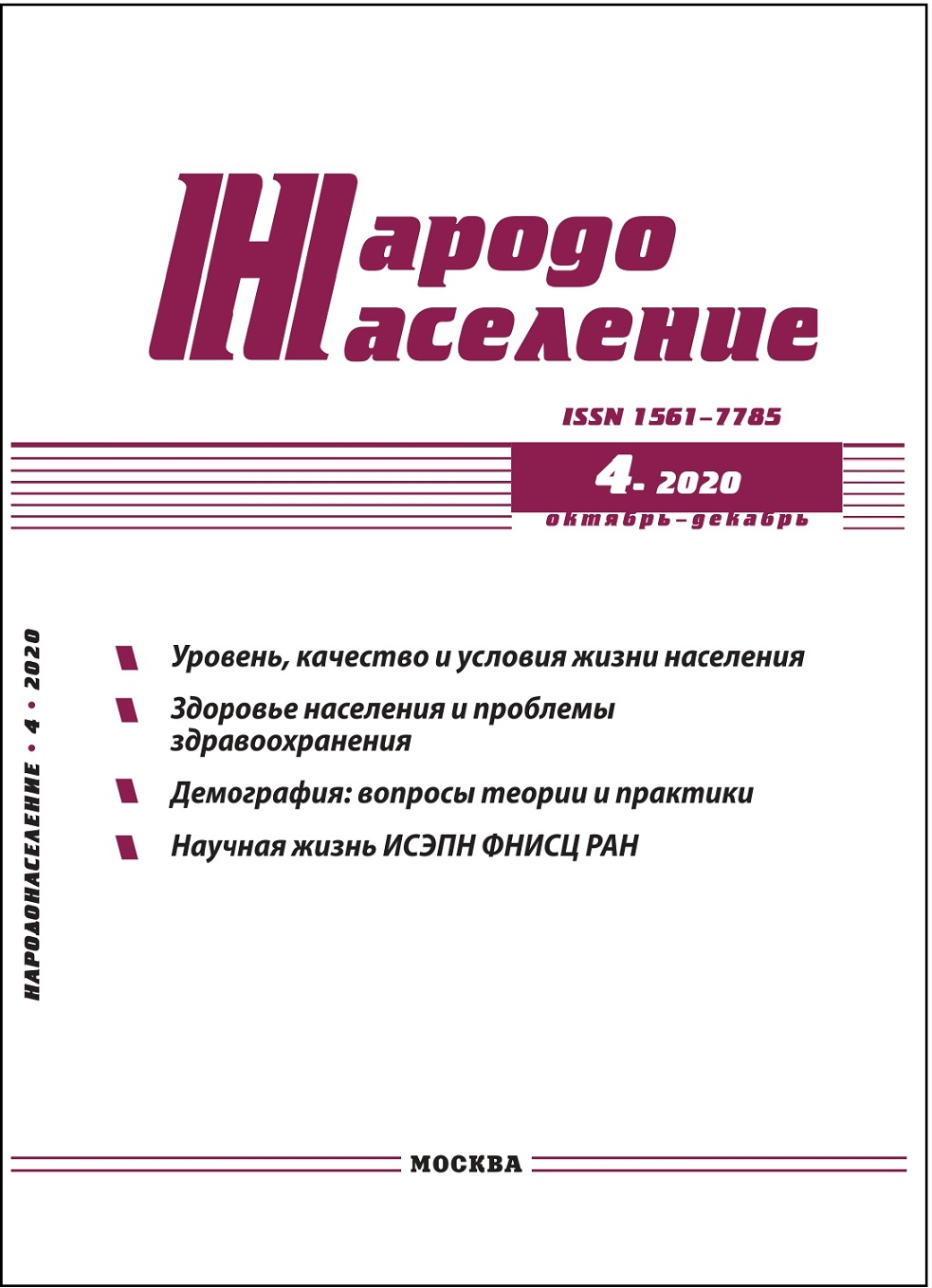Заработная плата: минимальный размер и дифференциация
Научная статья
Для цитирования
Токсанбаева М. С. Заработная плата: минимальный размер и дифференциация // Народонаселение. 2020. Том 23. № 4. С. 40-49. DOI: https://doi.org/10.19181/population.2020.23.4.4
Аннотация
Повышение минимального размера заработной платы может приводить к такому сжатию ее дифференциации, которое ослабляет стимулирующую функцию. В статье поставлен вопрос о влиянии на эту функцию роста МРОТ до уровня прожиточного минимума трудоспособного человека. По информации Росстата выявлено, что уменьшение различий в заработках работников в зависимости от их квалификации началось в 2017 г. и продолжилось в 2019 году. Снижался и коэффициент фондов, но по-прежнему оставался слишком высоким. Исследование причин данного противоречия построено на гипотезе, что, прежде всего, оно коренится в дифференциации заработков по видам экономической деятельности (отраслям). Для анализа отобраны отрасли, в которых ключевые профессиональные группы — наиболее квалифицированные кадры, а именно специалисты высокой квалификации и квалифицированные рабочие. Сжатие межквалификационной дифференциации ниже обоснованных нормативов произошло в отраслях с заработной платой не выше средней по всем работникам. Этот процесс начался с 2017 г., когда МРОТ прожиточного минимума еще не достиг. В ключевых профессиональных группах, в части отраслей с высокими заработными платами, рассматриваемые различия доходили до чрезмерно высоких значений. А в отраслях с невысокой заработной платой ее дифференциация по ключевым группам в сравнении с 2017 г. несколько увеличилась, что может быть объяснено ослаблением трудовых стимулов и попыткой их восстановить. Это служит подтверждением того, что обеспечение воспроизводственной функции оплаты труда следует согласовывать с действенностью стимулирующей функции. Однако без снижения межотраслевых различий заработных плат достижение такой согласованности не представляется возможным.
Ключевые слова:
заработная плата, дифференциация, воспроизводственная и стимулирующая функции, минимальный размер оплаты труда, квалификация, вид экономической деятельности
Литература
1. Мигранова, Л. А. Заработная плата в России и в мире: сравнительный анализ / Л. А. Мигранова // Народонаселение. — 2018. — № 3. — С. 52-67. DOI: 10.26653/1561-7785-2018-21-3-04
2. Соболева, И.В. Воспроизводственная функция заработной платы и трудовая мотивация в современной России / И. В. Соболева // Вопросы политической экономии. — 2019. — № 3. — С. 95-104.
3. Можина, М. А. Распределительные отношения: доходы и потребление населения / М. А. Можина. — Москва: Гайнуллин, 2001.— 304 с. ISBN 5-94013-005-4.
4. Токсанбаева, М. С. Дифференциация заработной платы в контексте стимулирования труда / М. С. Токсанбаева // Народонаселение. — 2019. — № 3. — С. 116-129. DOI: 10.24411/1561-7785-2019-00031
5. Соболев, Э.Н. Оплата труда в российской экономике: тенденции и проблемы / Э. Н. Соболев // Вестник Института экономики Российской академии наук. — 2018. — № 5. — С. 79-96.
6. Бузгалин, А.В. Закат неолиберализма / А. В. Бузгалин // Вопросы экономики (к 200-летию Карла Маркса). — 2018. — № 2. — С. 122-141.
7. Грэбер, Д. Бредовая работа. Трактат о распространении бессмысленного труда / Д. Грэбер. — Москва: Ад Маргинем Пресс, 2020. — 601 с. ISBN 978-5-91103-541-9.
2. Соболева, И.В. Воспроизводственная функция заработной платы и трудовая мотивация в современной России / И. В. Соболева // Вопросы политической экономии. — 2019. — № 3. — С. 95-104.
3. Можина, М. А. Распределительные отношения: доходы и потребление населения / М. А. Можина. — Москва: Гайнуллин, 2001.— 304 с. ISBN 5-94013-005-4.
4. Токсанбаева, М. С. Дифференциация заработной платы в контексте стимулирования труда / М. С. Токсанбаева // Народонаселение. — 2019. — № 3. — С. 116-129. DOI: 10.24411/1561-7785-2019-00031
5. Соболев, Э.Н. Оплата труда в российской экономике: тенденции и проблемы / Э. Н. Соболев // Вестник Института экономики Российской академии наук. — 2018. — № 5. — С. 79-96.
6. Бузгалин, А.В. Закат неолиберализма / А. В. Бузгалин // Вопросы экономики (к 200-летию Карла Маркса). — 2018. — № 2. — С. 122-141.
7. Грэбер, Д. Бредовая работа. Трактат о распространении бессмысленного труда / Д. Грэбер. — Москва: Ад Маргинем Пресс, 2020. — 601 с. ISBN 978-5-91103-541-9.
Статья
Поступила: 21.09.2020
Опубликована: 11.12.2020
Форматы цитирования
Другие форматы цитирования:
APA
Токсанбаева, М. С. (2020). Заработная плата: минимальный размер и дифференциация. Народонаселение, 23(4), 40-49. https://doi.org/10.19181/population.2020.23.4.4
Раздел
УРОВЕНЬ, КАЧЕСТВО И УСЛОВИЯ ЖИЗНИ НАСЕЛЕНИЯ








